Sharp-toothed "Skat". Under the flags of three states
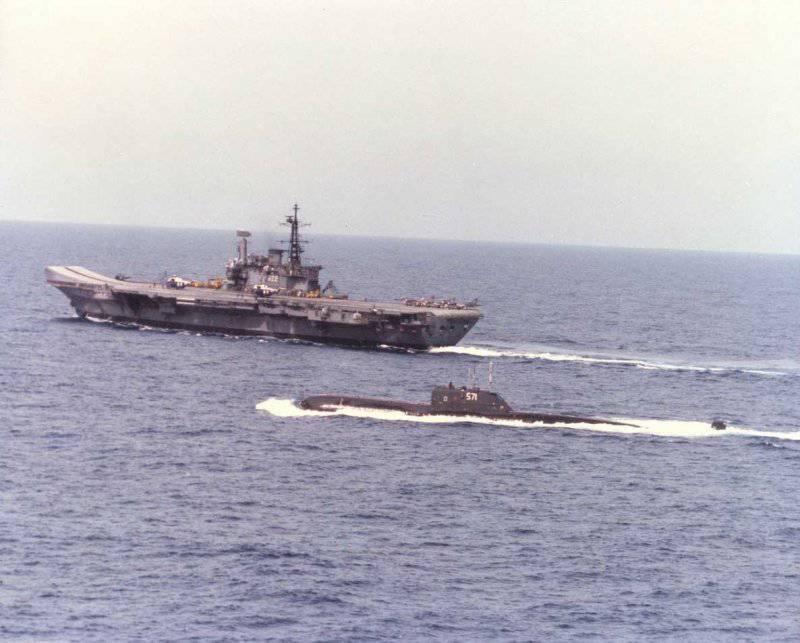
Titanium boats. Supercavitating torpedoes and liquid metal reactors. What else weapons could surprise the fleet?
The audience prepared for the hundredth time to break their spears in the dispute over the Lira-class submarine fighters. Dive a kilometer with the Komsomolets and fantasize about the Poseidon breaking through the darkness at 200 knots.
Carefully understand what kind of weapon and why determine the balance of forces at sea, there are few who want it. It is significant that among the thousands of articles on military topics posted on topwar.ru, only one article was devoted to submarines of Project 670 Skat. Dated 2012.
"Toothless Skat" - the worst series of PL
In the accepted categories faster / deeper / stronger "Skat" was so bad that it is hard to believe that the superpower's fleet was armed with such equipment.
The slowest nuclear-powered ship of its time. Sources call 25 knots under water, foreign ones give even less.
Unlike the US Navy, where the speed qualities of submarines were traditionally indicated in the 20+ format (classified), there were no secrets in the characteristics of the Skat. The low speed was an inevitable consequence of its design.
In terms of specific power-to-weight ratio (3,75 hp / ton) "Skat" was twice inferior to its peers. A single-shaft power plant with one pressurized water reactor is nonsense for the Soviet fleet.
Vigorous maneuvers, underwater races or attempts to avoid fired torpedoes were not even considered as combat techniques.
Haste and vanity are the lot of stupid marlins and tuna.
And "Skat" silently glides in the water column, waving the edges of its fins.
Among other anti-records of "Skat" is the low strength of the case. The only Soviet submarine of the second generation, whose operating depth was limited to 240 meters (maximum - 300). Comparison with peers: the multipurpose "Yorsh" (671 projects) could dive to 400 meters, and the titanium "Lyra" - to 450 meters.
Hydroacoustic complex? Why does such a submarine need a high-class GAK? Instead of the standard for underwater hunters SJC "Rubin", the new nuclear-powered ship received the "Kerch" complex with reduced dimensions and capabilities.
The firing range of missiles has been reduced by five times compared to the previous series of SSGNs armed with the P-6 missile system. In addition to this disadvantage, the newest P-70 "Amethyst" missiles have lost their supersonic flight capability.
This situation completely made it impossible to attack the AUG from a safe distance, forcing the clumsy submarine to overcome the anti-submarine defense lines. Of course, if you do not take into account the fact that the "Skat" did not have a chance at all to catch up with an aircraft carrier formation, which was traveling in a 30-knot course.
For the half-century anniversary of the Great October Revolution, a series of nuclear-powered ships with very mediocre characteristics was laid. Cruise missile boats (SSGNs) were then considered the main strike force at sea. How did the customer, represented by the Navy command, agree to such compromises? And what did you get in return?
"Skat" (NATO designation - "Charlie") has become one of the most successful submarine projects. The fighting qualities of these boats were duly appreciated by the most demanding inspector - the likely enemy in the person of the US Navy.
All the unexpected technical solutions of the Skat had one explanation.
For the first time in the world, nuclear-powered ships were built thousands of kilometers from the sea.
A notable feature of Soviet industry was the dispersal and duplication of capacities in case of a major war. Often this practice went not only to the detriment of economic considerations, but also common sense.
In the early 1960s, in addition to large nuclear shipbuilding centers in Severodvinsk, Leningrad and Komsomolsk-on-Amur, a fourth was formed - in Gorky (modern Nizhny Novgorod), at the facilities of the Krasnoye Sormovo plant.
The idea was beautiful only in words. If the construction of a submarine in Severodvinsk for any reason turned out to be impossible, then the presence of a reserve shipyard ("Krasnoe Sormovo") could not correct the situation. The submarine corps assembled in Gorky were then completed and re-equipped in Severodvinsk.
Adjacent enterprise with the most inconvenient location in relation to the head manufacturer!
But this stories there was also a positive moment.
Geography and forced restrictions on transportation along internal river routes forced admirals and developers of tactical and technical assignments to limit the flight of imagination. That had the most favorable effect on the combat and operational qualities of the "Skat".
In cramped quarters and ... resentment
It is worth noting that the ultimate goal of the project was not just the creation of a small nuclear-powered ship. On "Red Sormovo" they built missile-carrying boats, in the belly of which the launching silos of the Kyrgyz Republic were placed.
The set of requirements required many non-trivial solutions.
Due to the lack of space in the bow, for the first time in domestic practice, the horizontal rudders had to be moved to the middle of the submarine. And some of the mechanisms of the reactor plant should be located in adjacent compartments.
By the way, the lack of space did not affect the habitability in any way. The conditions for accommodating the crew on the boats of Project 670 were even improved compared to those of their predecessors. The full-time crew (80 people) was fully accommodated in three bow compartments, far from the noisy and dangerous propulsion mechanisms. The explanation of this paradox, as usual, was associated with the insignificant size of a person against the background of a 100-meter ship. The specified size restrictions did not apply to people.
Nevertheless, the limited displacement forced to revise the composition of the SSGN weapons. Even at the stage of the initial sketches, it was necessary to abandon the "Chelomeev monsters" with the starting weight of 5-6 tons.
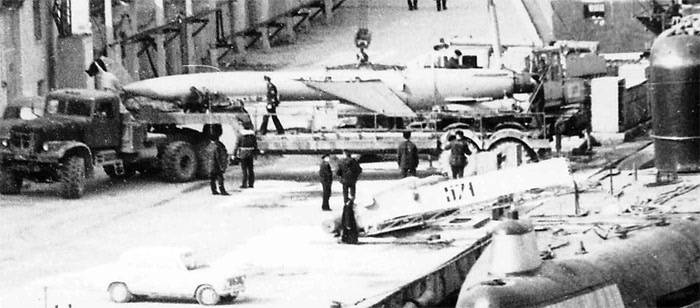
The P-70 "Amethyst" anti-ship complex was chosen as the "main caliber". Eight inclined missile launchers located on the sides, in the bow outside the robust hull. The P-70 rocket developed a transonic flight speed with its own launch weight of about 3 tons.
But the main value of "Amethyst" was invisible from the outside.
When creating the second generation SSGN, the designers were tasked with providing launch of the CD from a submerged position... Unlike modern "Calibers" with a retractable air intake, the technology of the early 1960s. did not allow to ensure automatic depressurization and reliable activation of the turbojet engine after the cruise missile left the water. For this reason, anti-ship missiles with a sustainer solid-propellant rocket engine (TTRD) were used as part of the P-70 complex.
Of course, this is not the most effective solution for a long flight in dense layers of the atmosphere. But there was no other choice.
Reducing the size and launch mass, the use of a turbojet engine and a low-altitude flight profile - all these factors combined led to a sharp decrease in the missile's flight range.
Having lost the advantage in firing range (80 km instead of the previous 350-400), the P-70 complex provided submariners with stealth while preparing for an attack. The missile launch was possible when moving at a low speed at a depth of 30 meters with sea waves on the surface up to 5 points.
If launching a CD from a submerged position can be considered an inevitable consequence of progress in the field of missile weapons, then other qualities of the Amethyst have become a real headache for a potential enemy.
Primarily because of the low-altitude trajectory.
The missile flight altitude on the marching section was only 60 meters.
Was it possible to increase the range by flying at high altitudes?
Unfortunately, the developers of the P-70 faced yet another difficult problem. Unlike the boats of previous projects, which were on the surface throughout the entire attack, the Skat crew had no opportunity to correct the flight of the launched anti-ship missiles in the middle section of the trajectory.
The need for correction was associated with the insufficient characteristics of the radar heads of that time, their limited detection range and the lack of complex algorithms for search and selection of targets in anti-ship missiles. During this time, a mobile sea target could go beyond the limits of the GOS. The missiles were required to be "brought out" to the target area manually.
Providing a long firing range in the absence of correction was meaningless. The designers of "Amethyst" focused their efforts on the development of a balanced complex, where the flight range corresponded to the capabilities of the guidance equipment, while ensuring the minimum flight altitude of the missiles.
The guidance problem was solved due to the short flight time. The enemy's order did not have time to move away from the calculated point where the anti-ship missiles were launched.
"Amethyst" did not need to climb to a kilometer height so that its radar seeker (GOS) could cover a significant area of the sea surface. The Amethyst emerged from the horizon and saw the target straight ahead. In such conditions, not even the most reliable GOS of the 60s level. got the opportunity to see and capture the target.
For example. The main flight of the first generation anti-ship missiles (P-35 / P-6) flew at high altitudes, up to 7000 meters, which, firstly, excluded the factor of surprise, and secondly, made the missiles vulnerable to enemy shipborne air defense systems (Talos , "Terrier").
The low-altitude mode allowed the Amethyst to remain invisible to the radar stations of enemy ships until the last minutes. Even with the early detection of a launch from a submarine using hydroacoustics, the use of anti-aircraft weapons was excluded.
Dagger strike from under the water
The weak link of "Amethyst" remained its GOS, assembled on the primitive element base of that era. In such conditions, its noise immunity was inferior to the radar sight of the anti-ship missile system of the P-35 / P-6 family, through which the operator, who was on board the carrier ship, corrected the flight and "locked" the missile on the selected target.
The most serious fears were confirmed by the results of the use of naval countermeasures and electronic warfare during the Yom Kippur War (1973), when none of the 54 Soviet-made anti-ship missiles fired failed to hit the target.
On the other hand, there was no merit of high-tech electronic warfare equipment in this. The attacking side once again proved the complete lack of military knowledge, ingenuity and target selection skills, ineptly "leading" to the most primitive traps.
In addition, the methods of countering the Israeli Navy would be unsuitable for a high-intensity conflict, for the conditions of the open ocean.
The fleets of the Arab states used P-15 missiles with a homing head similar to the Ametista seeker. The Amethysts themselves, of course, were not there. The P-70 complex has never been used in combat conditions, remaining a Doomsday weapon. Two of the eight missiles on board the Skat submarines were equipped with a nuclear warhead.
It is worth noting that as of the end of the 60s. no state in the world possessed anti-ship weapons of this level and purpose. Soviet anti-ship systems were unique. The interference immunity of the GOS was not a problem of a specific product, but was a general aspect in the eternal confrontation of means of attack and defense.
This whole story with multi-ton anti-ship missiles had a more serious drawback. About which, due to the impossibility of eliminating it with the available means, they preferred (and still prefer) not to remember. Issuance of target designation for submarines in real time in combat conditions. At least for targets 50 nautical miles away. Without which, neither the Skat, nor its predecessors with the long-range P-6 complexes simply could not realize their capabilities.
Whatever the shortcomings of the "Amethyst", the secretive approach to the attack and the minimum flight time at low altitude forced such a weapon to be reckoned with. The emergence of SSGNs with the P-70 complex significantly increased the level of threat to the US Navy's ship formations.
And, of course, "Skat" remained true to the traditions of the submarine fleet. On board the hunter had six torpedo tubes with ammunition load of 16 torpedoes.
Achilles and the turtle "Charlie"
Speed is an advantage as long as it doesn't break stealth. All stories about the 40-knot "Lear" contradict the specifics of the use of the submarine fleet. At this speed, the boat does not hear anything, but everyone can hear it. Like any weapon, submarines are designed for their specific tactics., in which their full potential is revealed. And this tactic has not changed much since the first submarines appeared.
Underwater, it is not the extra 10 knots that are still valued, but stealth.
Even the best modern nuclear-powered ships have a low-noise (in a number of sources - operational or tactical) underwater speed does not exceed 20 knots. Moving at a higher speed creates unnecessary risks to the sub. Given these facts, the maximum 25 nodes of the "Skat" no longer seem like an outrageous value.
Submarines are not rapid reaction weapons that leave their bases on alert. According to all the canons of submarine warfare, they should be in advance covertly deployed in positions, on the routes of the likely route of enemy ships.
And then the slowest turtle will be able to catch up with Achilles if it crawls across the path.
The technical appearance of the Project 670 SSGN simplified deployment and combat use. There is only one main turbo-gear unit (GTZA - "gearbox" of the nuclear-powered ship). Reduced number of coolant pumps due to the presence of only one OK-350 nuclear steam generating unit on board (the core is the VK-4 reactor). Lower displacement and wetted surface area, coupled with a number of measures to reduce noise (fairings of all holes and cutouts, mechanisms for closing scupper holes).
All this made the Skat submarines the quietest and most secretive among Soviet second-generation submarines.
As for doubts about the reliability of a single-shaft scheme with one reactor, then we can talk about a non-existent (fictitious) problem. For 65 years of the history of the nuclear submarine fleet, not a single submarine has been lost for this reason.
In turn, "Skat" was designed by high-level professionals. The priority in the creation of a single-shaft submarine has become large-scale measures to duplicate and disperse important components (batteries, converters, switchboards). An autonomous power unit appeared in the third compartment. The power supply of the pumps and the control of the reactor were considered to be guaranteed in any, the most incredible situations on board.
In addition to the main line of the propeller shaft, two standby water cannons were provided, driven by an emergency diesel generator. Fortunately, in practice, the Skat boats never had to return from combat duty in a 5-knot course, with a plugged-in reactor.
The real grin of the fleet
While famous record holders were devastating the defense budget (titanium "Goldfish" K-162 at the price of an aircraft carrier) or fought for the title of "longest submarine" (the bow of the K-64 - in Leningrad, feed with an emergency reactor - in Severodvinsk), on guard of the sea lines were eleven SSGN project 670. To which were later added six more units, built according to the modified project 670M "Chaika" (CHARLIE-II). With an even more modern missile system "Malachite".
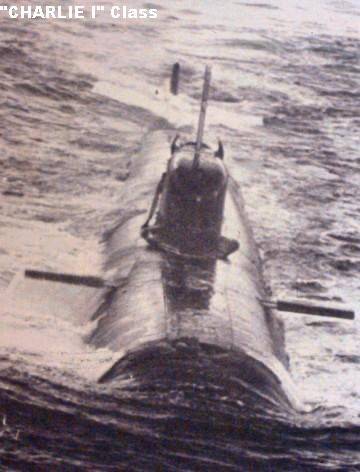
You can continue to fantasize about underwater interceptors and superweapons, but practice has clearly shown that the limit for technology in the 1960s and 70s. were such "ordinary" submarines as "Skat" or its contemporaries, the multipurpose "Ruff".
At least, they were able to repeatedly go out to combat services and return safely to the bases. Attempts to surpass their qualities led to those strange results, which were mentioned in passing a couple of paragraphs above.
The patience of the machine is the limit ...
The nuclear submarine was and remains an object of increased danger. No matter how simple the design of the "Skat" was, the boats of this type had two serious accidents.
The first emergency was the spontaneous launch of the reactor on the K-320, which was on the slipway, which entailed a rupture of the circuits with serious consequences (radiation accident at Krasnoye Sormovo, 1970).
The second case was the sinking of K-429 in Sarannaya Bay off the coast of Kamchatka in 1983.
Due to their small size, the Skaty had less surface buoyancy, but the blame for the sinking of the K-429 lay entirely with the command. Interrupted inter-voyage repairs and going to sea with a new crew for trim. No one was convinced of the integrity of the valves locked in the open position during welding. The boat went with an ax to the bottom.
The accident caused the death of 16 sailors, but the admirals and responsible persons were very lucky that time. The boat was not damaged and sank at a relatively shallow depth of 38 meters. Among the crew there was a midshipman who had undergone diving training, who helped most of the people to get to the surface.
As a result of the incident, unpleasant details of the organization of military service were revealed. Emergency pop-up buoys for some reason were welded (!) To the submarine's side. And out of a hundred individual breathing apparatus, 90 were torn and unfilled. IDA, transferred to the submarine by rescuers, were in about the same condition.
The sinking site of the K-429 became known purely by accident: a random patrol ship accidentally noticed and picked up from the water a couple of volunteers who left the damaged K-429 through a torpedo tube.
The urgent rescue operation was generally successful. The last to leave the boat was midshipman Baev. Fulfilling the request of the commander-in-chief, he managed to close the hatch behind him, preventing the compartment from flooding. A feat in the depths nearly cost him his life. The submarine was raised to the surface and put under repair, in order to flood again two years later at the quay wall in Krasheninnikov Bay. The score is 1: 1, a draw with the Americans, who for some reason drowned their USS Guitarro at the pier.
With such an organization of the service, the only thing that the Pacific Fleet lacked was boats equipped with metal cooled reactors (LMC).
Only good news became the fact that both known emergencies with submarines "Skat" occurred either at the stage of construction, or due to improper operation - outright negligence on the part of the command. The laconic design of "Skatov" excluded the likelihood of severe accidents. For 20 years of military services, not a single incident was noted that caused numerous casualties or endangered the existence of a submarine. Taking into account the number of "Skatov" series, such a result testifies to the highest operational qualities of the submarines.
Epilogue. Under three flags
All attacks in the direction of "Scat" should be considered fiction. In reality, it was a mighty combat complex with an unparalleled main caliber. Only five states in the world owned the technology to create such weapons.
Indicative is the example of India, which since the early 1970s. led the development of its own nuclear submarine. As a result of fruitful scientific research in 1983, an agreement was reached on leasing one submarine from the USSR Navy. For everyone who is not aware of this story, the question is: out of all the variety of domestic projects, which boat did the Indian admirals choose?
Note. The title illustration shows the Indian nuclear submarine S71 "Chakra", ex. K-43 project "Skat", export modification 06709. Abeam - aircraft carrier "Viraat".
When using materials
http://deepstorm.ru
http://bastion-karpenko.ru
http://militaryrussia.ru
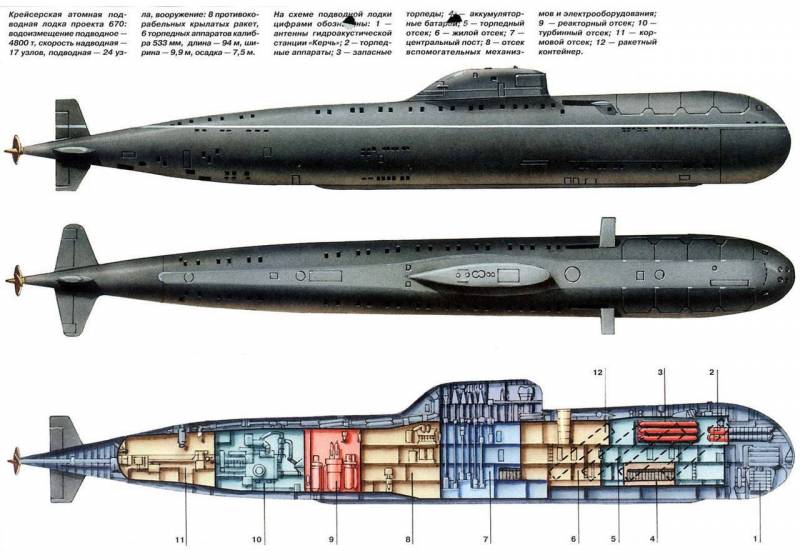
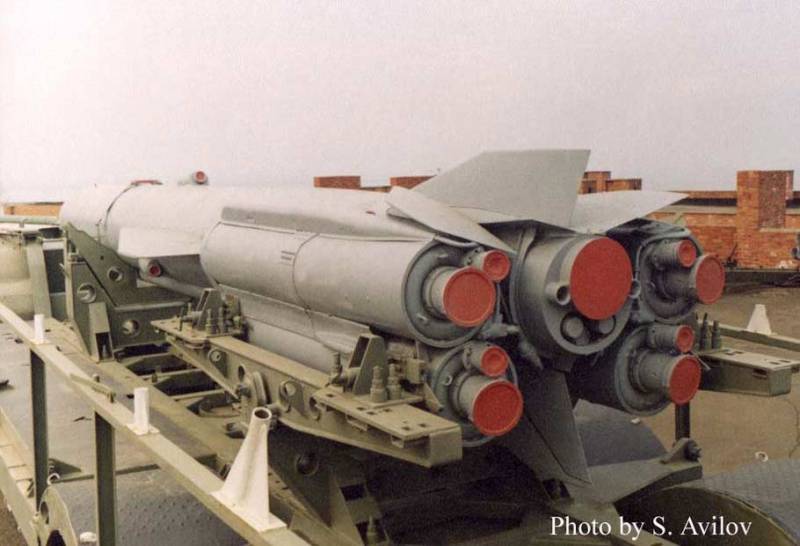
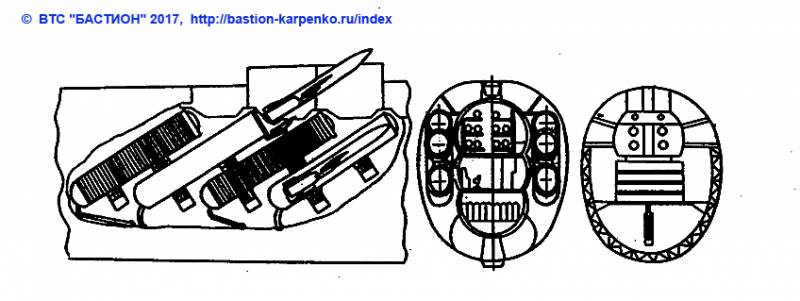
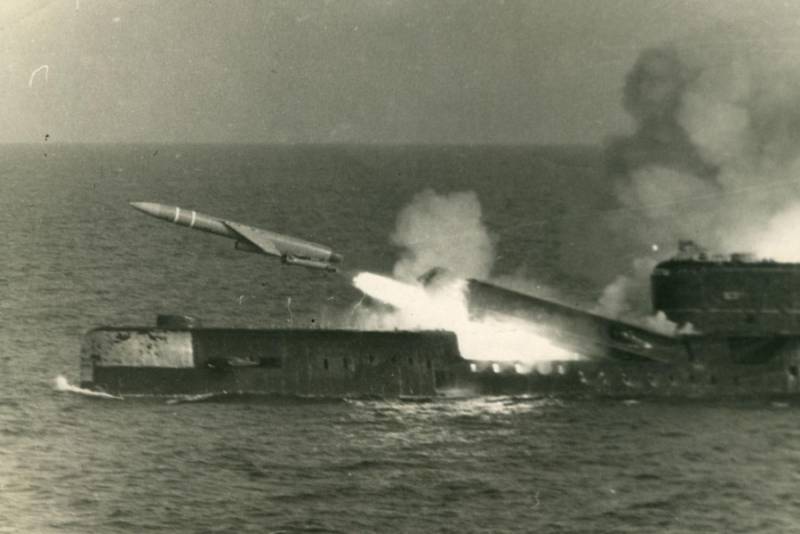
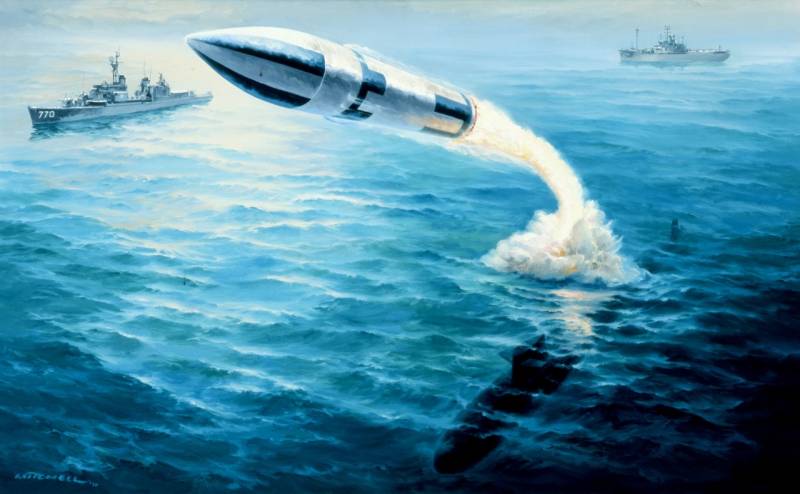
Information